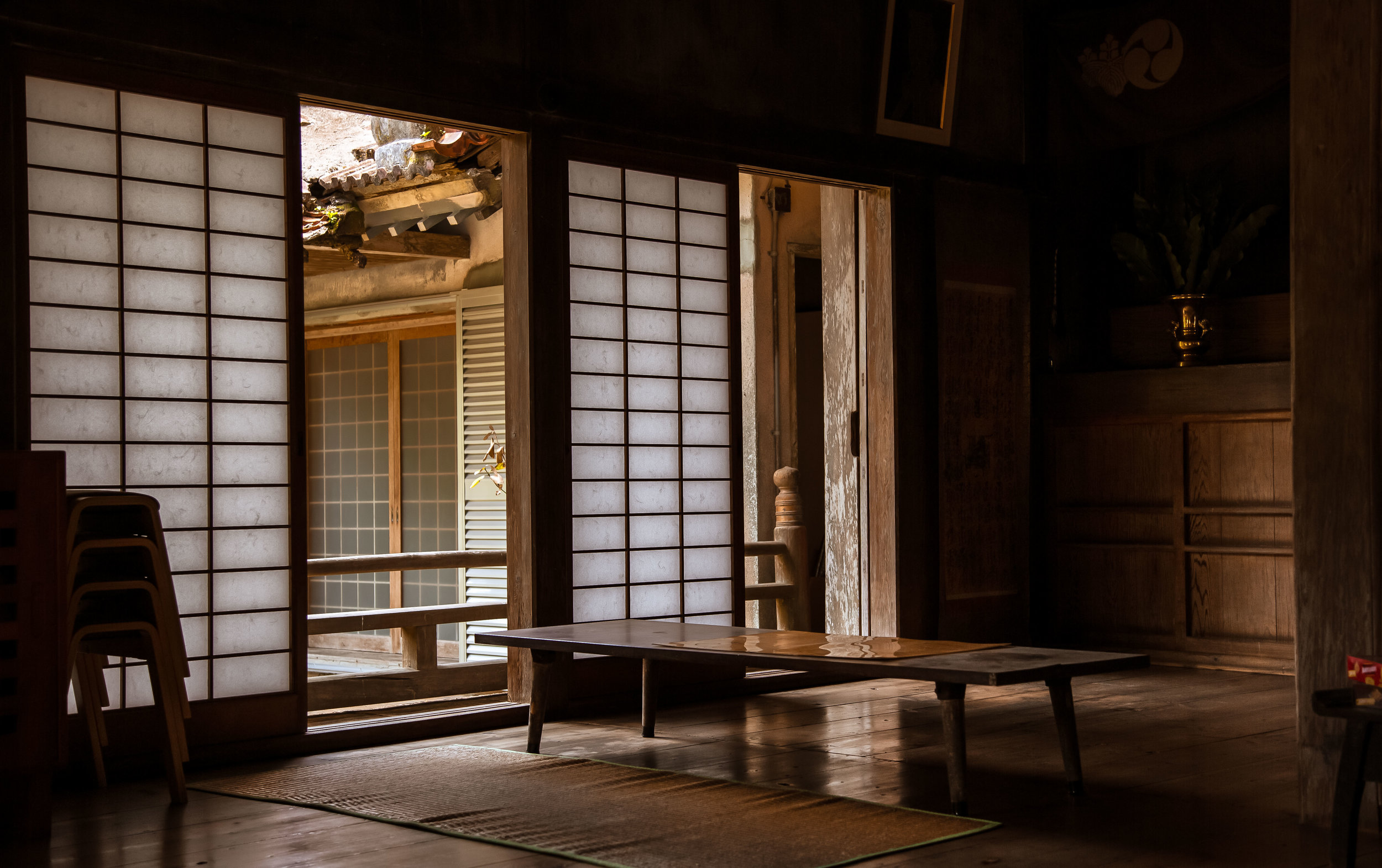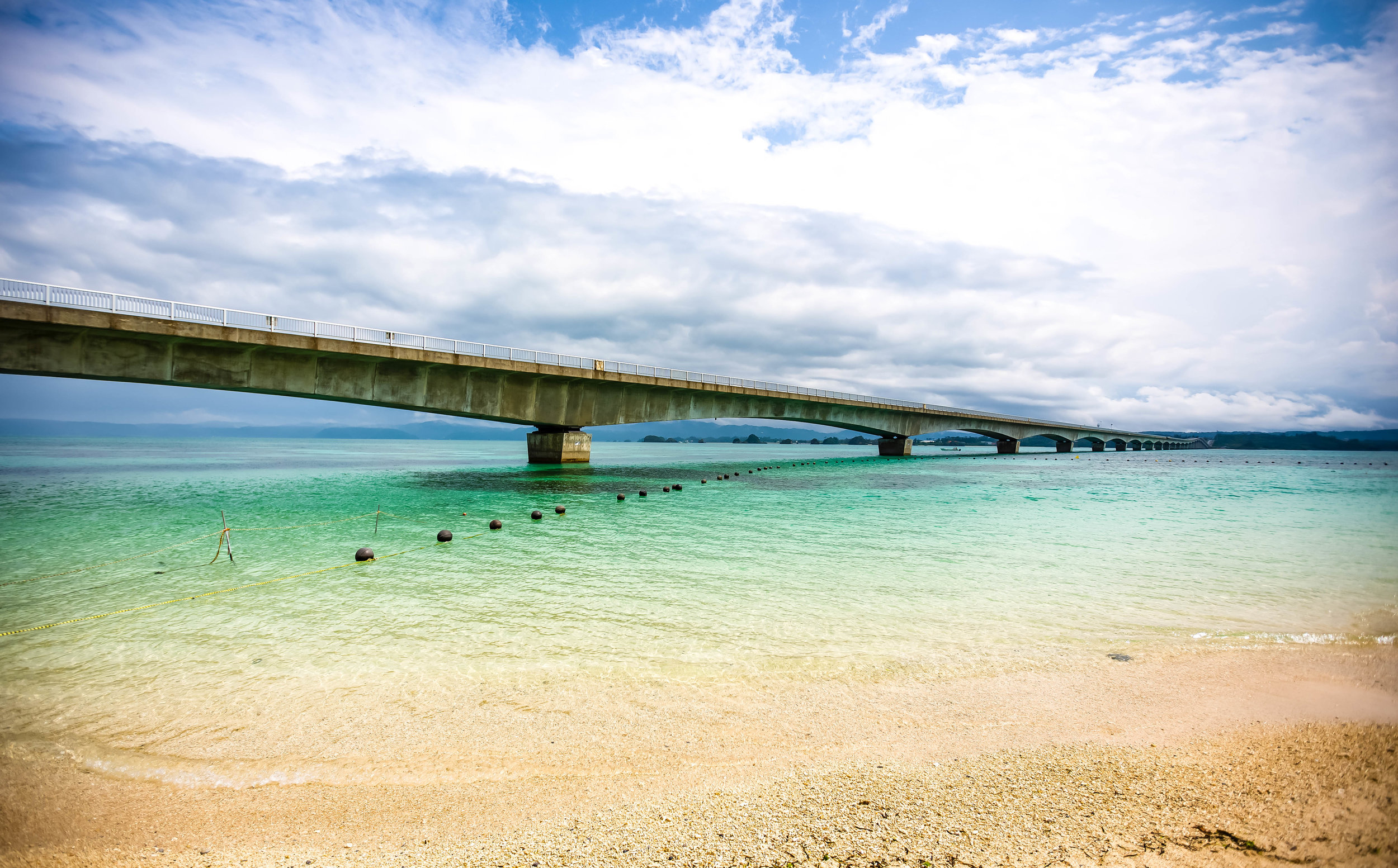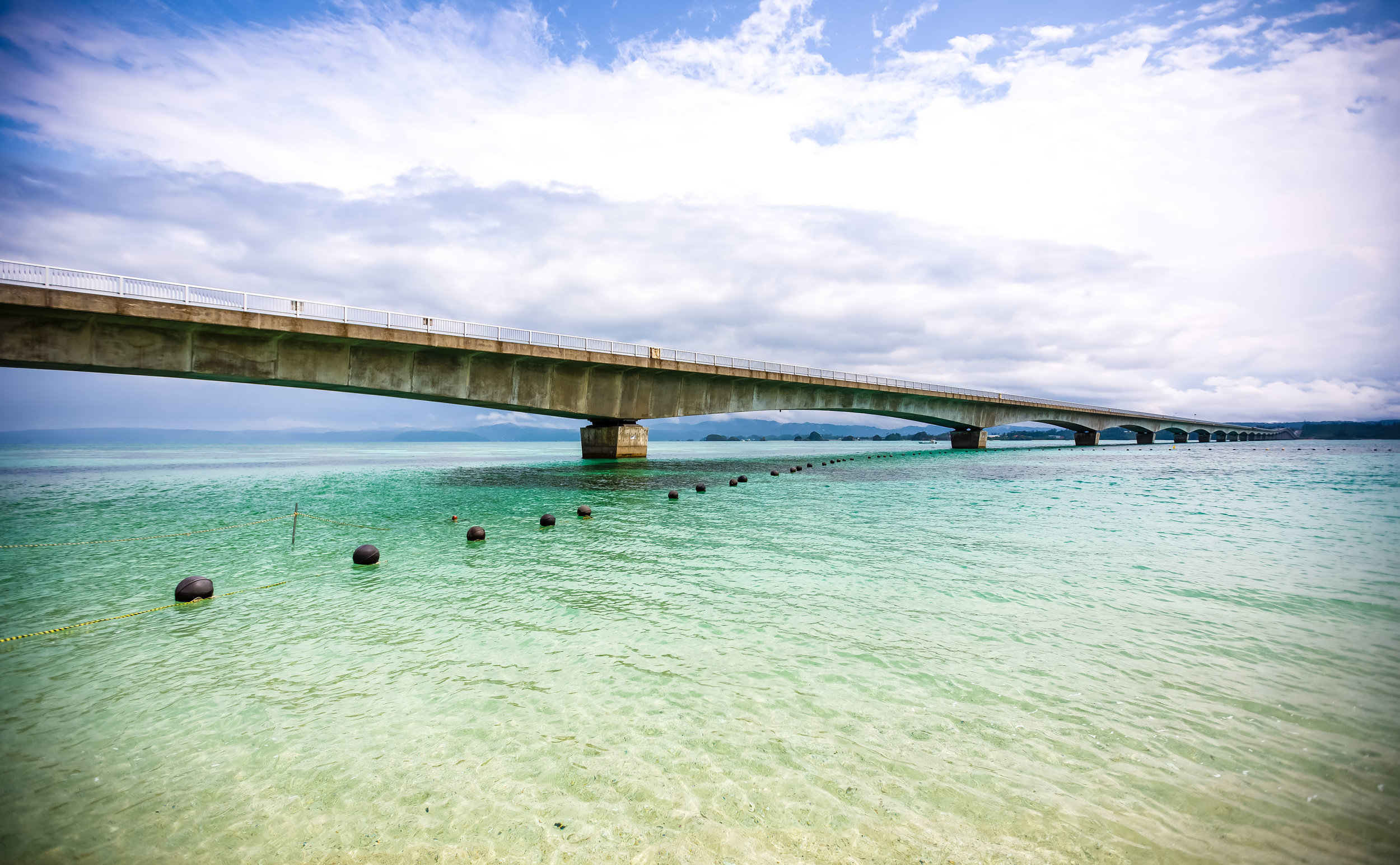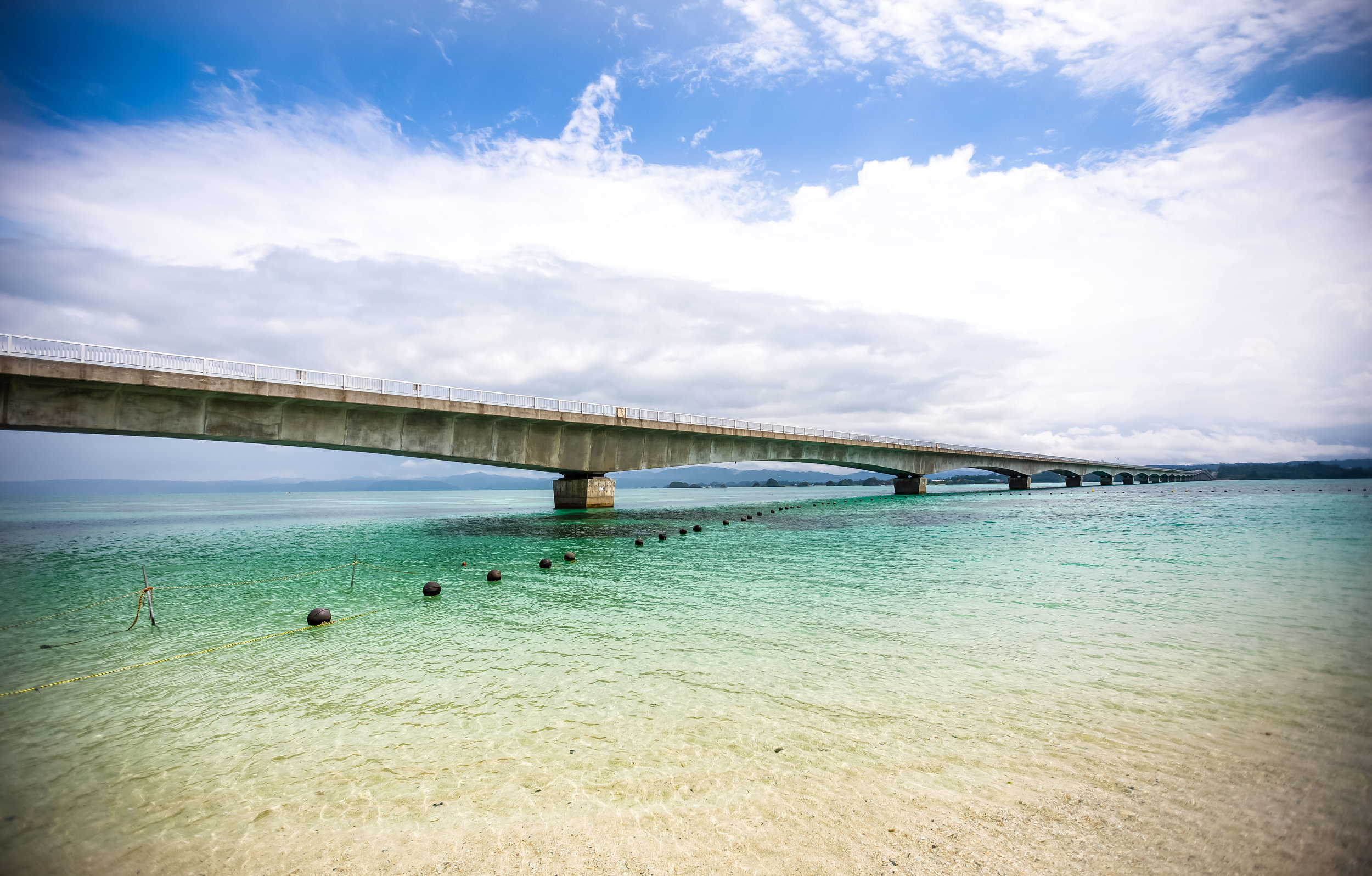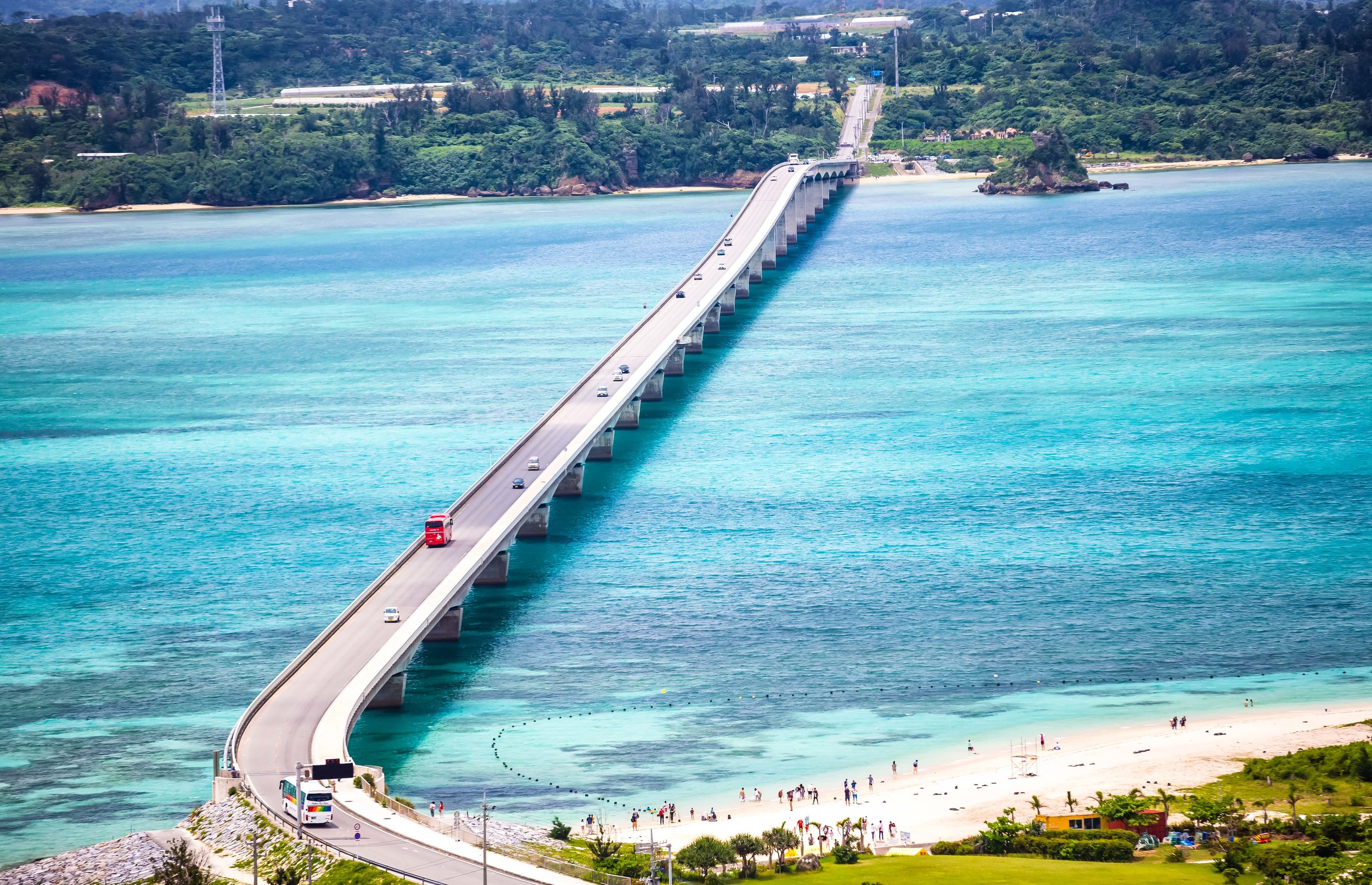Okinawa is known for its beautiful beaches, amazing food and slow pace of life. This just might be why the local people have one of the longest life expectancies in the world. Nicknamed the “Land of the Immortals”, the islands have the highest rate of centenarians in the world.
Even though diet is probably the largest factor, it is also said that the slower pace of life and carefree attitude of the locals, despite all of the adversity that they’ve faced over the past few centuries has certainly contributed.
Suffice to say, the past couple of centuries have been rather disastrous for the Ryukyan people. Once a powerful kingdom that made its riches from international trade, Okinawa fell under the subjugation of the Satsuma Clan, the Tokugawa Shogunate, the Meiji Empire only later to become one of the most important focal points of the Second World War.
Despite all of this, the people of Okinawa are resilient and are proud to display their culture and all that they’ve been able to accomplish in the decades since the war ended.
Sadly much of what Okinawa lost over the past few centuries has been difficult to completely restore and many of the places that tourists flock to today, including Shuri Castle, Naminoue Shrine, Futenma Shrine, etc. are all recent reconstructions that have allowed the local people to bring back some semblance of normalcy to their lives.
Even though the Okinawa of today has been completely rebuilt and redeveloped, the fact remains that finding anything that pre-dates 1945 is extremely rare.
The Kin Kannonji Buddhist temple, located in the central area of the island was one of the few buildings lucky enough to survive the war and even though it is a bit of a distance away from the capital, should be one of those destinations on every tourists itinerary.
The temple is located within the small coastal town of Kin (金武町), which is home to Camp Hansen, one of Okinawa’s largest military bases. The town is a bit of weird one that seems almost completely devoid of life during the day, but apparently comes alive at night in order to cater to the American service men and women who live in the area.
Known as the birthplace of Okinawan “Taco Rice” and for its production of the local Okinawan rice wine “Awamori”, there’s not much else in the area apart from its beautiful Buddhist Temple, which has been designated as a protected cultural relic.
Still though, a trip to Kin is well worth the short drive out of Naha, if only for checking out this historic place of worship which not only includes a Buddhist temple, but also a Shinto Shrine and a beautiful limestone cave.
Kin-Kannonji (金武觀音寺)
Starting out with its name, “Kin Kannonji” (きんかんのんじ) literally means the ‘Kin Kannon Temple’ (金武觀音寺), which simply tells us the location of the temple and who is worshipped inside.
In this case, it is the Buddha of Compassion, known in Japan as “Kannon” (觀音).
If you’re unaware, the ‘Buddha of Compassion’ is referred to by several different names in the many countries of Asia, but is one of the most commonly worshipped Buddhist figures.
Interestingly, even though most people in Asia regard ‘Kannon’ as a goddess-like figure, in Tibet, the Buddha of Compassion manifests as the “Dalai Lama” who has traditionally been reincarnated as a male and historically has acted as a god king of sorts.
While Kannon most often appears in a female form in Eastern Asia, it is quite common to find statues that appear to be androgynous, leaving the gender of this all-important Buddhist figure somewhat unimportant.
Link: Guanyin (Wiki)
The temple was established in the early 16th Century by a famous Japanese monk Shonin Nisshu (日秀上人) whose arrival in Okinawa is the stuff of legends. The most likely explanation is that he set off from Japan to search for the so-called “Pure Land”, a mountain island paradise, which is thought to be where Kannon lives. Unfortunately while on route he was shipwrecked by a typhoon and washed ashore in the Kin area, saved by the local villagers.
Upon his arrival, legends insist that he used his strength with the dharma to perform some miracles that greatly improved the lives of the local citizens (more on that later) which elevated his status in the community and allowed for him to start his missionary work and the construction of the temple.
Although the actual date of the temple’s initial construction isn’t documented very well, most agree that its history dates back to 1522, which is relatively the same period as when Nisshu arrived in the area.
I suppose you could say that the exact date of the temple’s construction isn’t really all that important though. The original burnt to the ground in the 1930s and the building we see today was a pre-war re-construction.
When you walk down the visiting path, you are met with some standing statues of Amida Buddha, which are likely going to be wearing the popular floral pattern t-shirts that you’ll see everywhere in Okinawa. Once you’ve made it past them, the path opens up to a large tree-covered courtyard with a garden to your left, the cave entrance to your right and the temple directly in front of you.
Keeping with tradition, the design of the temple is simplistic in nature and is constructed entirely of wooden columns that support a visually impressive curved roof. When it comes to Japanese temple architecture, there really is a tremendous amount of beauty in its simplicity and this temple is a stunning example of that.
The foundation is elevated above the ground using stone and wooden planks that help to protect the structure from earthquakes. The interior is constructed entirely of local wood and is a large open space with only a few wooden pillars helping to support the roof. There are also sliding doors on all sides that (when moved) change the dynamic of the room and allow for fresh air and light to enter.
In terms of decoration they keep with tradition and take a very minimalistic approach to the design of the room - At the main door you will be met with an incense urn where you can purchase some incense or some lucky charms (based on the honor system) and say a little prayer.
You can’t actually enter the room on your own, but the doors are quite large, so you can get a pretty good view of the interior from the outside.
You’ll find another altar sitting between two pillars which that opens up to the main shrine where the resident monks do their daily prayers.
The main shrine is a simple set up consisting of a statue of Kannon (觀音) with wood-carved statues of Amida (阿彌陀佛) and Yakushi (藥師佛) on either side.
In front of the shrine you’ll find two stone lanterns which help provide a bit of light in the room, but not really enough to take nice photos of the statues from a distance.
The most notable aspect of the temple (design-wise) is the ‘Irimoya-zukuri’-style roof (入母屋造) which is the Asian version of a ‘hip-and-gable’ roof - but a hell of a lot cooler.
In this specific style of roof, there is a main section known as the “moya” (母屋) covering the central core of the building, while the hipped portion known as “hisashi” (廂) extends well beyond the interior portion and the outside veranda.
The amazing thing about this design is that the size of the roof (in comparison to the lower part of the building) means that its weight has to be supported by a complex system of brackets and supporting blocks which expertly distribute weight and ensures that the building is structurally intact.
While the design of the roof is quite typical for Japanese temple architecture, what sets this temple apart is the usage of native Okinawan red tiles known as “Aka-Gawara” (沖繩赤瓦), which is quite common for construction throughout the Ryukyu islands, but almost non-existent in Japan. The red tiles, which have faded somewhat over the years blend in quite beautifully with the wood that was used to construct the temple and makes the building shine in the sun.
Next to the temple you’ll find the administration office where you can go to purchase some good luck charms, seek some spiritual advice or just have a friendly chat. The staff that work at the temple are often quite busy maintaining the grounds, but they are really friendly and appreciate visitors, especially tourists who want to learn about the area.
While touring the grounds it‘s likely that you’re going to notice that the area is covered by a couple of really large trees. These trees are also considered sacred as they date back to the construction of the original temple and are anywhere between 350 - 400 years old. You’ll notice that the trunks have decorations on them and that the area around the tree is well taken care of. It is also quite common to see local visitors taking family photos in front of the trees.
Nisshu Cave (日秀洞) / Kin Shrine (金武宮)
A 270 meters in length and a depth of about 30 meters, the famous cave that sits directly beside the temple is named, “Nisshu Cave” after the monk who founded the temple. Considered to be hallowed space in Okinawa, the cave is highly regarded not only because it is the home of a small Shinto Shrine, but also because it is partly used as a storage area for locally produced Awamori rice wine (泡盛).
One of the main reasons why the cave is considered sacred to the local people however isn’t because of the shrine or the rice wine stored inside - It is thanks to a local legend that serves as the basis for the creation of the shrine and the temple.
The legend tends to vary a bit but the more realistic story goes a little like this: In 1552, when Buddhist Monk Nisshu (日秀) was attempting to return to Japan after spending years in China on pilgrimage, he was washed ashore in Kin when a typhoon hit. Rescued by the villager, he wanted to show his appreciation, so he set out to vanquish a disorderly bunch of (extremely venomous) Habu snakes that had infested the cave and were blamed for wreaking havoc on the locals. It would take some time, but when he was finally successful in ridding the area of the snakes, he placed some hand-carved images of the Buddha, Yakushi (彌勒佛) and Kannon (觀音) in front of the cave to act as a protective seal.
The more imaginative version of the story on the other hand tells of a single giant Habu snake, which lived in the cave and would slither into town, drink all the water in the well and on its way back home would have its way with local farm animals. When Nisshu appeared he used his supernatural powers and chanted Buddhist sutras at the entrance of the cave which eventually drove the snake away permanently.
Whichever story you prefer, the origin of the temple is a direct result of whatever happened at the cave back in the 1500s and the safety that the townspeople could finally enjoy was repaid through their gratitude and the construction of the temple.
The cave has a set of stairs that allow you to descend to the cave floor and explore the interior - The further you go down however the darker and damper it gets, so you’re going to want to watch your step. If you have a light on your cellphone, you might want to turn it on so that you can see where you’re going. Once you’ve made it to the bottom of the staircase, the view looking back at the surface is quite beautiful with all the limestone stalactites hanging from the roof of the cave.
Once you get to the bottom you’ll notice there is a gated cave door that blocks you from walking any further. This dark cavern leads to the Awamori storage area and (unfortunately) isn’t part of the free tour.
Since 1949, the Kin Tatsu-no-Kura (龍の蔵) company has stored bottles of their locally produced rice wine in the cave for anywhere between five and twelve years. The company offers three daily tours of their section of the cave, which is filled with thousands of bottles of expensive wine.
The rice wine is as a popular local gift with many people electing to buy a bottle of the wine and having it stored at their own cost for well over a decade for special occasions. If you’d like to visit this section of the cave, you’ll have to pay an entrance fee of ¥400 for one of the tours (11am, 2pm, 3:30pm).
The Kin Shinto Shrine (きんぐう) is a quaint little shrine located within the Nisshu Cave next to the temple. Despite the fact that it is not a full fledged shrine like Futenma Shrine or Naminoue Shrine, it is considered to be one of the ‘Eight Shrines of Okinawa’ (沖繩八社) meaning that it is still quite important. Enshrined within the hokora (祠) are the three popular deities worshipped as the “Kumano Sanzan” (熊野神) and are also worshipped at most of Okinawa’s other shrines.
The history of this little shrine doesn’t seem to have been very well recorded, but what I’ve been able to find is that the legend of the monk Nisshu’s arrival in the area dates back to 1552 and the Buddhist Temple outside was established shortly after. It is also thought that this shrine was the first in Okinawa to worship the Kumano deities, so if that were true, it would have to pre-date the Futenma Shrine, which was constructed shortly after the Kin Buddhist temple under the patronage of the same king.
It is important to note that when the temple was constructed in the 16th Century, the relationship between Buddhism and Shintoism was considered to be symbiotic in nature, so when Nisshu arrived in Okinawa, he brought with him his knowledge of Buddhist philosophy, but he is also credited as the person who started ‘Kumano Sanzan’ worship in the Ryukyus.
Unfortunately during the Meiji Era (明治), the government made Shintoism the state religion and instituted a policy known as “Shinbutsu Bunri” (神仏分離) which forced the separation of Shinto and Buddhism (which was regarded as a foreign influence). This meant that shared spaces within shrines were no longer permitted.
This policy however had little effect on this temple and the two continued their symbiotic relationship allowing worshippers to visit to pay their respect to Kannon and the Kumano Sanzan as well.
Unfortunately when most tourists descend into the cave, they tend to pay more attention to their beautiful surroundings and easily pass by the small shrine without paying much attention to it. It might be small, but it is one of Okinawa’s most historically significant shrines, so stopping for a minute to check it out and pay your respects is always a good idea.
Getting There
Address: 222 Kin, Kin Township District, Okinawa (沖縄県金武町金武222)
MAPCODE: 206 140 144
If you’re driving a car to the temple, simply input the Map Code provided above and your GPS will navigate the best route to the temple. The drive is quite simple as you’ll just need to get yourself on the Okinawa Expressway heading north eventually exiting at the Kin IC.
From there you’ll follow Route 329 into the downtown area of Kin and will make a left turn when you see signage for the temple. You can park your car in the free parking lot directly opposite the entrance to the temple.
You’ll want to keep in mind that the expressway in Okinawa requires a toll, so when you get on the highway you’ll have to grab a ticket and you’ll pay when you exit. If you are driving directly from Naha to the Kin Exit, you can expect to pay about ¥600-700 each way.
Link: Okinawa Expressway Tolls
If you plan on visiting the temple and want to use Okinawa’s public transportation network, getting there is actually quite straight forward. From the Naha Bus Terminal you’ll want to board Bus #77, which should take about 110 minutes to arrive at the Kin (金武) stop. From there you’ll almost instantly notice a large white road sign that reads: “Kin-Kannonji” which is about a 230 meter walk away from the main road.
Link: Okinawa Bus Route List
Before heading back, you might want to take some time to walk around the streets and explore the alleys of Kin, which seem to cater exclusively to the US Army stationed at nearby Camp Hansen. The area is full of seedy bars and pubs and during the day most of the town is boarded up with little to no activity which is a bit odd compared to the rest of Okinawa.
Coincidentally one of the only places in town that is open during the day is Okinawa’s famous “King Tacos” which serves up extremely filling Taco Rice dishes. If you’re hungry and want to get something to eat before heading to your next destination, you may want to consider stopping by and trying out this tasty yet weird Okinawan specialty.
If you’re heading to Okinawa to spend most of your time on the beach, you’re sure to be delighted as there are over a hundred world class beaches to choose from. If you’re like me however and enjoy taking in a bit of history during your travels, you might end up feeling a bit disappointed.
The sad reality is that there are currently few buildings that pre-date the war, but this little temple was one of the lucky ones that was spared and has been able to withstand the test of time. It is easy to visit Naminoue Shrine or Shuri Castle, but if you want to see something truly historic, you’ll definitely want to make your way out to the small coastal town of Kin to check out its beautiful Buddhist temple




